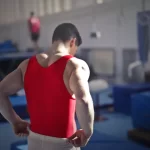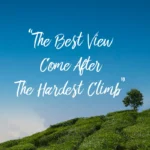The back handspring is a crucial acrobatic move that lays the groundwork for more advanced skills like the backflip. Mastering it can greatly help overcome the common fear of moving backwards. However, incorrect training can lead to poor technique, potential injuries, and challenges with more complex acrobatic feats later on.
In this article, we’ll outline four essential steps to perfect the technique for executing a back handspring, even if you don’t have access to a gym.
Step One: The Setup
Mastering the back handspring starts with a crucial first step that many overlook: the setup. Nailing this initial phase is essential for laying the foundation for a successful and powerful back handspring.
The setup, often called the “wind-up,” involves adopting a precise squat position that is key for generating the necessary momentum.
- Foot Placement: Position your feet about shoulder-width apart. Some gymnasts prefer their feet together, but shoulder width typically offers better balance and power distribution.
- Squat Depth: Lower into a squat. The depth of your squat is vital; aim for about 90 degrees. This angle is optimal as going lower can make it harder to push off effectively against the ground. The key is to not allow your knees to extend past your toes, which helps prevent strain and maintains the proper alignment.
- Upper Body Alignment: Keep your chest up and look forward. It’s common to either stare down or let the chest fall, which can disrupt your balance and the flow of energy needed for the handspring. Your arms should start out in front, extending straight and aligned with your shoulders.
- Back and Buttock Positioning: Ensure your back remains straight and your buttocks are pushed back, not forward. This alignment not only aids in balance but also in power generation as you prepare to launch into the back handspring.
Powering Up
With your body in this aligned squat position, you are essentially ‘winding up’ to unleash the energy required for the handspring. The arm movement plays a crucial role here:
- Arm Wind-Up: Extend your arms back as far as possible without breaking the alignment. This backward motion is critical as it helps build the momentum needed to propel your body backward in a smooth, controlled arch.
By focusing on these setup details, you create a strong base to execute a back handspring. This initial step is not just about getting into position but also about preparing your body to perform the move with power and precision.
Step Two: Executing a Back Handspring
Here’s a step-by-step breakdown of how to properly initiate and execute a back handspring.
Step 1: Initiation
The initiation of a back handspring is all about setting up the correct body position and momentum:
- Start by Leaning Back: Begin the handspring by leaning back slightly, letting your buttocks lead as if you are about to fall over. This movement helps in generating the necessary backward momentum.
- Control Your Lean: It’s crucial to control how much you lean back. The idea is not to fall over but to prepare your body to push off effectively in the next step.
Step 2: Execution
Once you have initiated the movement, the execution phase is where the skill truly takes shape:
- Arm and Shoulder Movement: As you continue leaning back, throw your arms back vigorously but carefully. Your arms should pass close to your ears, setting a line that your body will follow.
- Avoid Throwing Your Head Back Early: A common mistake is to throw the head back prematurely, which can disrupt your alignment and balance. Keep your head in a neutral position until your arms are fully extended beside your ears.
- Jump Off Your Legs: Simultaneously with the arm movement, jump off by straightening your legs. The power of your jump determines the momentum and height of your back handspring. Ensure that the jump is forceful yet controlled.
- Diagonal Movement: As you throw your arms and jump, aim for a diagonal movement with your body, keeping the arms and legs straight. This helps in managing the force and preparing for the landing phase.
Step 3: Arching and Landing
- Arching: Once your arms are in line with your ears and you are airborne, you can then safely begin to arch your back. This is the point where you also bring your head back.
- Landing: The landing should occur at a distance of about three-quarters of your body length from the point of takeoff. Your hands first hit the ground, followed by your feet, maintaining the same distance across to ensure a balanced and powerful landing.
Maintaining Core Strength
Throughout the back handspring, it’s vital to keep your core and buttocks tight. This not only supports your body during the intense rotation but also ensures a smooth and controlled movement. A tight core helps in maintaining a good hollow position as you jump and arch.
Step Three: the Snap Down
As you advance in your gymnastics skills, it’s essential to master each part of the back handspring to boost your performance. Here, we’ll focus on the steps of the snap down, which are vital for maintaining momentum and preparing for subsequent gymnastic elements.
Entering the Handstand Position
Once you have initiated your back handspring and your hands hit the ground, you’ll find yourself in a handstand position. It’s crucial that your body is straight and your hands are firmly planted to provide a stable base for the snap down.
Executing the Snap Down
The snap down is the transition from the handstand back to the feet, preparing you for a solid landing.
- Stabilize in the Handstand: Ensure your handstand is stable with your body fully extended and hands firmly planted. This position is the foundation from which the snap-down is performed.
- Bend at the Hips: Begin the snap down by bending at the hips. This action is crucial as it initiates the movement needed to bring your legs down towards the mat.
- Controlled Leg Movement: With the hips bent, drive your legs downward in a controlled but forceful manner. The goal is to move from the handstand to a position where your feet are prepared to land, all while maintaining momentum.
The snap down isn’t just about getting your legs back down; it’s about using a strong and accurate movement to build momentum for what comes next in your routine. This forceful action quickly gets you standing upright again and ready for the next move.
Step 4: Perfecting the Landing
After perfecting the handstand and completing the snap down, the next key step in a back handspring is the landing. How you land affects not just how well you execute this move but also prepares you for what comes next, whether that’s a backflip or more back handsprings.
Landing Mechanics
Here’s how to land correctly to preserve the power and prepare for the next move:
- Land on the Balls of Your Feet: Focus on landing softly on the balls of your feet. This technique helps in absorbing the impact through your lower body efficiently.
- Absorb with Your Ankles: Alongside landing on the balls of your feet, use your ankles to absorb the force of the landing. This absorption is crucial in reducing the stress on your joints and maintaining balance.
- Maintain Slight Bend in Knees or Keep Them Straight: Contrary to instinct, you should not bend your knees too much on landing. A slight bend or keeping the knees straight helps retain the kinetic energy accumulated during the jump, which is vital if you’re planning to continue into another gymnastic element.
- Arms and Shoulders Position: Perhaps the most critical aspect of the landing is the position of your arms and shoulders. Keep them close to your ears throughout the transition from the snap down to the landing. This position not only aids in balance but also preps your body for an immediate follow-up move.
Transitioning to Further Moves
By keeping your arms raised and your core tight during the landing, you set yourself up perfectly for high backflips or another back handspring. This posture is key for a smooth transition between moves and helps you reach the right height and form for your next skills.
Final Words
Always put safety first and make sure you’re physically ready for the demands of such acrobatic moves. As you progress, continue to refine your technique, and don’t hesitate to go back to the basics if you face challenges.












